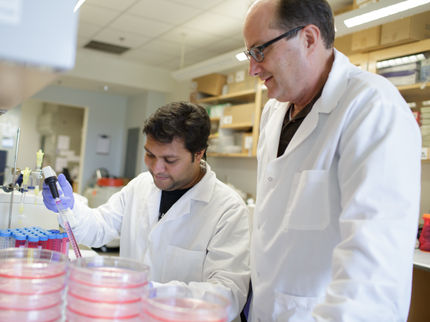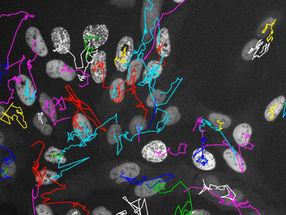Hepatitis C virus hijacks liver microRNA
Mechanism explains how virus survives in the liver and how a new antiviral works
viral diseases are still one of the biggest challenges to medical science. Thanks to thousands of years of co-evolution with humans, their ability to harness the biology of their human hosts to survive and thrive makes them very difficult to target with medical treatment.
Scientists at the University of North Carolina at Chapel Hill, working with colleagues from the University of Colorado, have shown for the first time how a small RNA molecule that regulates gene expression in human liver cells has been hijacked by the hepatitis C virus to ensure its own survival – helping medical scientists understand why a new antiviral drug appears to be effective against the virus.
MicroRNAs are involved in regulating the expression of genes in cells, usually by blocking the production of key proteins or by destabilizing the messenger RNAs that encode the cell's proteins as it grows and divides. Normally they act by downregulating gene expression. The research team found that the binding of a prominent microRNA in liver cells, called miR-122, to the viral RNA results in its stabilization, promoting efficient replication of the virus genome in the liver and supporting the virus' lifecycle.
"The hepatitis C virus has done two very interesting things with miR-122," says Stanley M. Lemon, MD, professor of medicine and microbiology and immunology and a member of UNC Lineberger Comprehensive Cancer Center and the Center for Translational Immunology.
"First, it has evolved a unique relationship with a key regulator, since miR-122 represents about half of all microRNAs present in the liver. Second, the virus has usurped a process that usually downregulates gene expression to upregulate the stability of its RNA and expression of viral proteins needed for its lifecycle. It's a classic example of how viruses subvert normally beneficial functions of the cell to their own nefarious purposes."
Work by Dr. Lemon and his colleagues in 2005 helped to demonstrate that miR-122 was required for hepatitis C to replicate itself, but the mechanism was not understood. Now the UNC research team has shown how it works, which helps to explain how a new experimental antiviral drug target the virus. The drug, called an "antagomer", binds to miR-122 and sequesters it in the liver and thus destabilizes the viral genome, accelerating its degradation in the liver. Results of the most recent study are published in Proceedings of the National Academy of Sciences.
Most read news
Organizations
Other news from the department science

Get the life science industry in your inbox
By submitting this form you agree that LUMITOS AG will send you the newsletter(s) selected above by email. Your data will not be passed on to third parties. Your data will be stored and processed in accordance with our data protection regulations. LUMITOS may contact you by email for the purpose of advertising or market and opinion surveys. You can revoke your consent at any time without giving reasons to LUMITOS AG, Ernst-Augustin-Str. 2, 12489 Berlin, Germany or by e-mail at revoke@lumitos.com with effect for the future. In addition, each email contains a link to unsubscribe from the corresponding newsletter.























































